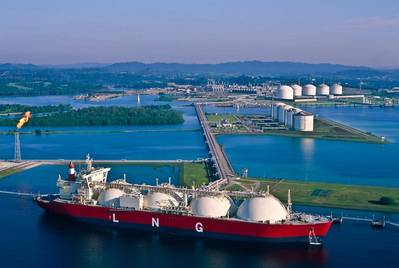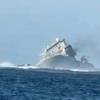Intersleek 1100SR Coating a Natural Choice for LNG Operators
How stand-out savings in fuel costs and CO2 emissions make Intersleek 1100SR the natural choice for LNG operators
Redirecting the world toward a lower carbon future is a responsibility shipping shares with all industries.
As a climate-friendly substitute for more carbon-intensive fuels, liquefied natural gas (LNG) has an important role to play in helping achieve this ambition. But, in protecting their fleet from fouling challenges, how can LNG operators best maximize hull efficiency and fuel consumption while also meeting the highest environmental standards?
Intersleek 1100SR from AkzoNobel’s International brand not only allows operators to benefit from fuel savings that can move the dial, it is precision-engineered to help them meet IMO targets of driving down CO2 emissions, while not adding any toxic materials to the environment.
Its proven real-world in-service performance offers LNG operators a speed loss of less than 1% over the docking cycle providing stand-out operational savings and CO2 emissions reduction, the manufacturer said, adding typical daily fuel consumption is driven down from 120 tonnes to 109 tonnes versus the baseline of the previous docking cycle.
And in terms of a typical 15-year docking cycle, the benefits of the advanced formulation of Intersleek 1100SR really stack up, AkzoNobel added. Fleet operators can expect to save 30% in paint volume, typically requiring 30,000 liters compared to 42,000 for silicone based biocide containing antifoulings. Fully recoatable after dry dock, Intersleek 1100SR dispenses with the need for a full reblast over three full applications, providing savings of $128,000 in blasting costs and $750,000 in application costs.
Additionally, as the only fluoropolymer foul release coating on the market that is entirely biocide-free, it offers stand-out environmental benefits that support operators to meet their carbon neutral journey and SEEMP commitments, while also being fully compliant with EU REACH legislation, AkzoNobel said. Over a 15-year docking cycle emissions of harmful VOCs are reduced by 48%, from 17 tonnes to 9 tonnes, while no biocides are released into the ocean compared to 27 tonnes from a typical biocidal based antifouling.
By being fully cleanable in service it also eliminates docking costs, with material removed able to be recycled and safely disposed of at anchor.
The LNG fleet typically operates in some of the most high fouling challenge regions. And as more vessels are undergoing slow-steaming operations or longer periods of inactivity operators require hull coatings that can cope with the most difficult of environments. Even after 30 days static in high-fouling challenge areas, performance of Intersleek is maintained with effective removal of macrofouling and slime resulting in no increase in fuel consumption on returning to service.
Accoridng to AkzoNobel, LNG operators utilizing Intersleek products to date have benefited from over $130 million of fuel savings as well as a reduction of 1.5 million tonnes of CO2 emissions. Trusted by operators the world over, Intersleek has over 500 applications, accounting for over 25% of the global LNG fleet, since the first LNG vessel was coated with Intersleek in 1999.













